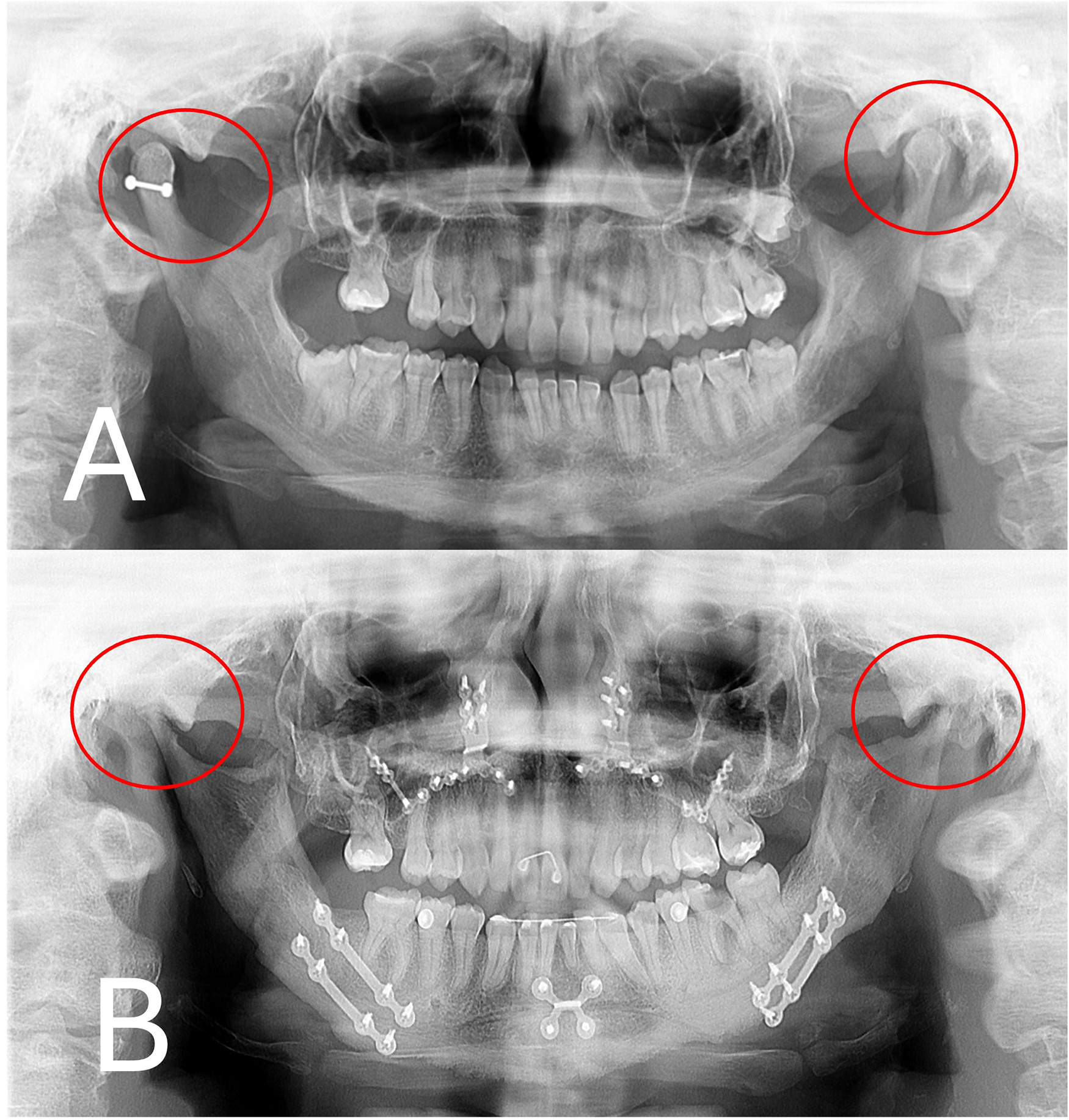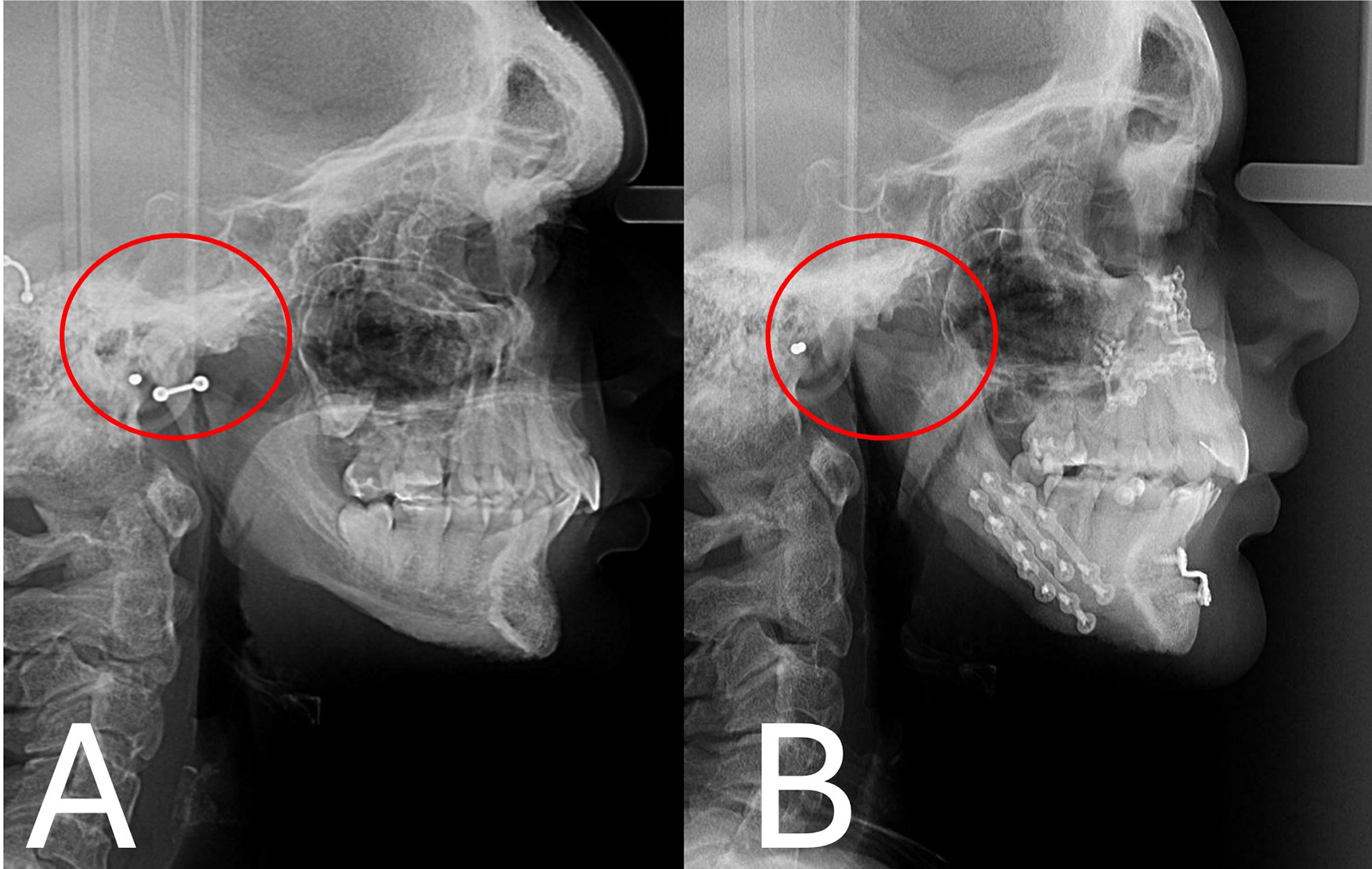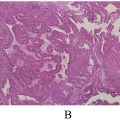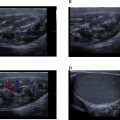Abstract
Idiopathic condylar resorption (ICR) is a pathological condition of unknown origin that affects the temporomandibular joint (TMJ) and can lead to malocclusion, facial asymmetry, TMJ dysfunction and orofacial pain. Imaging examinations are essential for diagnosis and planning of future treatment. To diagnose ICR, it will always be necessary to perform imaging tests and associate them with predisposing risk factors to understand the level of bone remodeling and mechanical trauma performed to propose the best type of treatment. The objective of this study was to elucidate the clinical case of a patient who underwent orthodontics and orthognathic surgery and after 2 years, occlusion recurrence was diagnosed with a severe and active ICR. In addition, it demonstrates the importance of requesting postoperative imaging examinations and clinical radiographic monitoring.
Introduction
Idiopathic condylar resorption (ICR) is a pathological condition of unknown origin that affects the temporomandibular joint (TMJ) and can lead to malocclusion, facial asymmetry, TMJ dysfunction and orofacial pain [ , ]. This resorption of the mandibular condyles can lead to a loss of posterior vertical height of the mandible, rotating and producing an anterior open bite, which is associated with mandibular retrognathia [ , ].
There are some factors that lead to ICR predisposition, the first of which is the female sex, approximately 9:1 female to male; the age from 10 to 40 years old, but with a predominance in the puberty phase; the angle class II relationship with or without anterior open bite; and dolichocephalic patients with a high occlusal plane and mandibular plane [ , , ].
The etiology is still unknown and can be classified according to the severity of joint degeneration. Osteoarthritis, osteoarthrosis and arthrosis are possible causes of condylar remodeling. Other nomenclatures include avascular necrosis, osteonecrosis, condylar atrophy, and condylar osteolysis [ , , ].
During mandibular orthognathic surgery, mandibular advancement tends to move the condyle to a more anterior position in the mandibular fossa, compressing the articular disc and mandibular bone. When this occurs, natural adaptation tends to occur in the TMJ, however this adaptation capacity is exceeded, and the mandibular condyle undergoes remodeling [ ].
Treatment is individualized and depends on the degree of TMJ involvement and the associated symptoms. Clinical treatments, such as analgesia, medications, physical therapy and occlusal splints are generally indicated in early cases of ICR. In cases where the anatomy of the TMJ is compromised, surgical procedures such as TMJ arthroscopic surgery, discopexy, orthognathic surgery, or total TMJ prosthesis are performed [ ].
Case report
A 24-year-old female patient complained of bilateral preauricular pain, otalgia and severe headaches. She complained that the bite was open, but she had already undergone orthognathic surgery 2 years ago to correct this complaint with another surgeon. According to the patient, her bite returned to its original position before orthognathic surgery in addition to constant pain. After seeking an explanation of her constant pain and the recurrence of her bite after orthognathic surgery, the patient came to us for evaluation, diagnosis, and treatment.
In her medical history, the patient had no systemic disease, denied a history of allergies, and reported that she had used contraceptives for 5 consecutive years. As she experienced pain in the temporomandibular joint, analgesics (ibuprofen 400 mg/1 tablet every 6 hours) and nonsteroidal anti-inflammatory drugs (Meloxican 15 mg/1 tablet per day) were used monthly. There was no treatment for temporomandibular disorders or retrognathia prior to orthognathic surgery. The symptoms she reported before orthognathic surgery (facial pain and breathing difficulty) persisted after the surgical procedure. The patient reported that before the orthognathic surgery, she underwent presurgical orthodontic treatment, and her facial pain was always present during this period.
Clinical examination revealed bilateral joint pain in the TMJ, difficulty in opening the mouth, bite deviation to the right side, mandibular retrognathia and anterior open bite. There have also been reports of nocturnal bruxism being associated with anxiety. With a history of orthognathic surgery and nocturnal bruxism, we investigated the possible causes of this pain and for such a large recurrence in occlusion. Imaging tests were performed to diagnose possible bone or dental pathologies.
The first exams to be requested were X-rays (Orthopantomography and Lateral radiograph), as they are quick and cheap exams. Based on the results of the radiographs and possible anatomical changes in the mandibular condyle, we requested a radionuclide bone scan, exams to evaluate the metabolic activity in the temporomandibular joint, an Magnetic Resonance Imaging (MRI) to evaluate the condition of the soft tissues and articular discs and a Computed Tomography (CT) to evaluate the characteristics nones of this joint.
The correct diagnosis of ICR is only possible after evaluating complementary tests, which gives us aa parameter of how the patient is currently correlating with her symptoms and the possible steps to be taken in the future.
Owing to the aggressiveness and speed of this reabsorption, analgesic measures were taken, and local measures with the application of high-viscosity hyaluronic acid to improve local mobility and subsequently the planning of a new orthognathic surgery with total TMJ prostheses will be carried out.
Orthopantomography and lateral radiograph
On orthopantomography, we can visualize condylar thinning and loss of bone volume even in a bidimensional form, especially when compared with an X-ray before surgery ( Fig. 1 ). On lateral radiography, the relapse of the mandible with retrognathia is evident, indicating loss of posterior height of the mandibular condyle ( Fig. 2 ).


Radionuclide bone scan
The results of bone scintigraphy using MDP _99m Tc showed hyperuptake of the radiopharmaceutical in the TMJ joints, which was more evident on the left side, and an apparent reduction in joint space was also noted ( Fig. 3 ).











